The orchids in North Idaho aren’t as spectacular as tropical orchids but they have their own attractiveness. Some of the orchid flowers are so small they may not be recognized as orchids at first.
Orchids are among the most specialized flowers. They have three sepals and three petals but the lower petal (called a lip) is highly modified. The lip is larger than the other petals and sepals and may have lobes, forks, pouches, spurs or a different color.
A few of the orchids found in North Idaho include spotted coralroot, mountain lady slipper, fairyslipper, Alaska rein-orchid and rattlesnake plantain. All of these orchids are perennials, so you can return to the same location every year to find them.
Spotted Coralroot (Corallorhiza maculata)
The seven- to 22-inch coralroot plant is purplish to reddish brown because it lacks chlorophyll. Coralroots depend on decaying organic matter for nutrients in deep forest duff below timberline. Leaves are reduced to a few fleshy scales and are the same color as the stem.
Upper flower petals are similar in color to the stem while the lower three-lobed lip is white with four to eight purple spots. Ten to 30 tiny flowers adorn each stem.
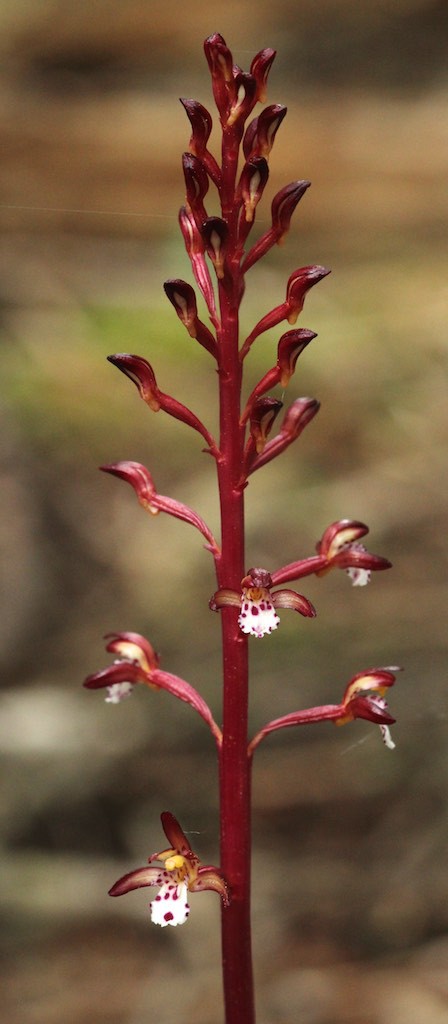
Mountain Ladyslipper (Cypripedium montanum)
One of our most attractive orchids is the mountain ladyslipper with purple- to copper-colored upper petals and sepals and a prominent white, pouch-shaped lower lip with purple veins.
The ladyslipper appears to have four sepals and petals instead of six because two sepals are fused together and one petal is the lower lip. Depending on the age of the plant, one to three flowers adorn the 10- to 30-inch stems. Lance- to egg-shaped leaves alternate up the stem.
Mountain ladyslippers grow in mixed conifer forests, either in the open or the shade. Like many orchids they grow in association with certain soil fungi.
Fairyslipper (Calypso bulbosa)
Small, single pink flowers growing in moist coniferous woods can be hard to find. The fragrant fairyslipper flower sits atop a three- to seven-inch stem that bears one dark green leaf at the base.
The lowest white or light pink petal is slipper-like and bears rose-colored spots. A cluster of golden hairs brightens the center of the lip.
The one egg-shaped leaf grows in autumn, persists through the winter and then withers the following summer. A small bulb underground grows in association with specific fungi.
Fairyslippers are also called Calypso orchids.
Alaska Rein-orchid (Piperia unalaschensis or Platanthera unalaschensis)
Rein-orchid flowers have a distinguishing spur–a narrow sack-like projection at the base of the lower lip. The spur on the Alaska rein-orchid is equal in length to the triangular lip.
Tiny greenish-white to white flowers spiral around the leafless stalk which grows up to 24 inches tall. Two to four lance-shaped leaves grow at the base of the stalk and wither when the plant begins to flower.
Rattlesnake Plantain (Goodyera oblongifolia)
For the longest time I couldn’t identify this plant because I only saw the leaves. The distinctive dark green leaves have a white stripe along the midrib and grow in dry coniferous forests. While I was looking up another orchid in my plant book, I came across the rattlesnake plantain and instantly recognized the rosette of leaves.
I’m waiting to see the dull white to greenish flowers clustered at the top of the seven- to 14-inch flowering stem but they aren’t in full bloom yet. One sepal forms a hood over the lip and most of the flowers are orientated to one side.

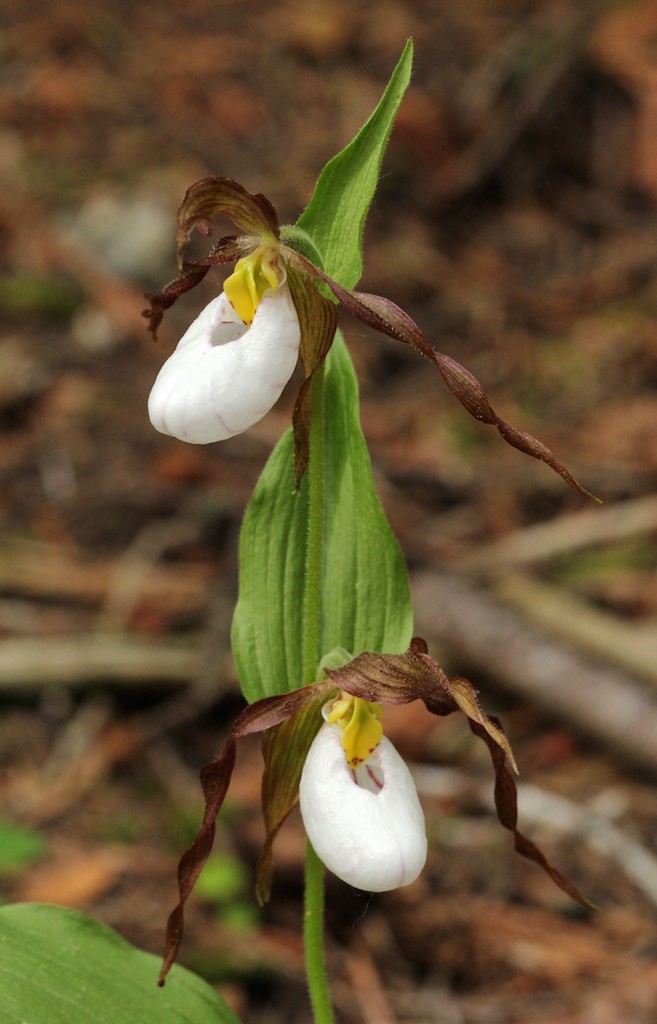
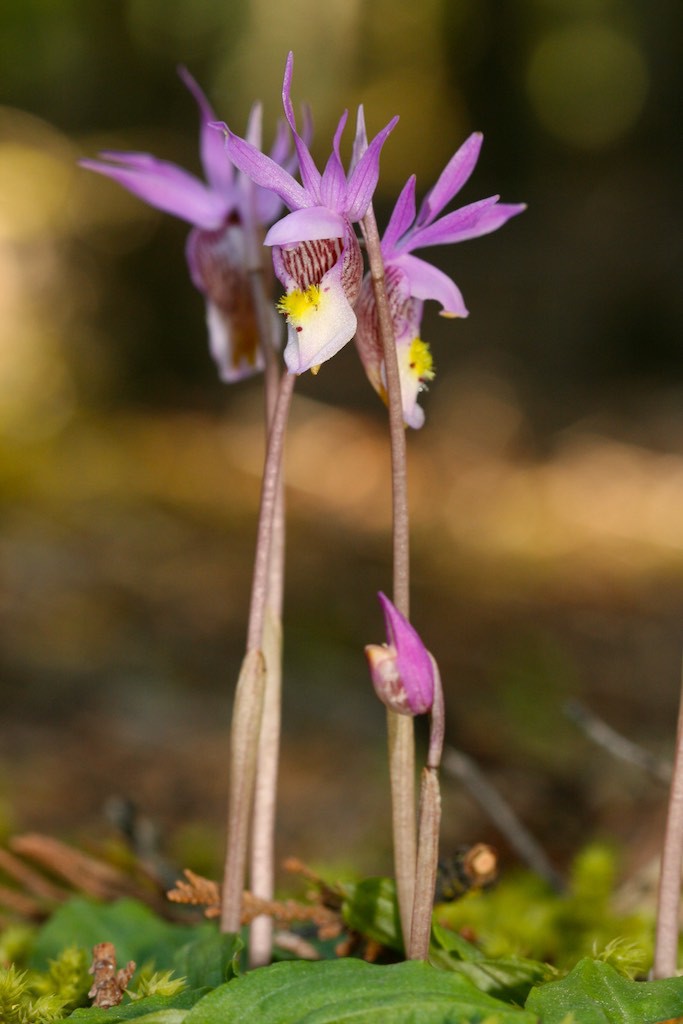
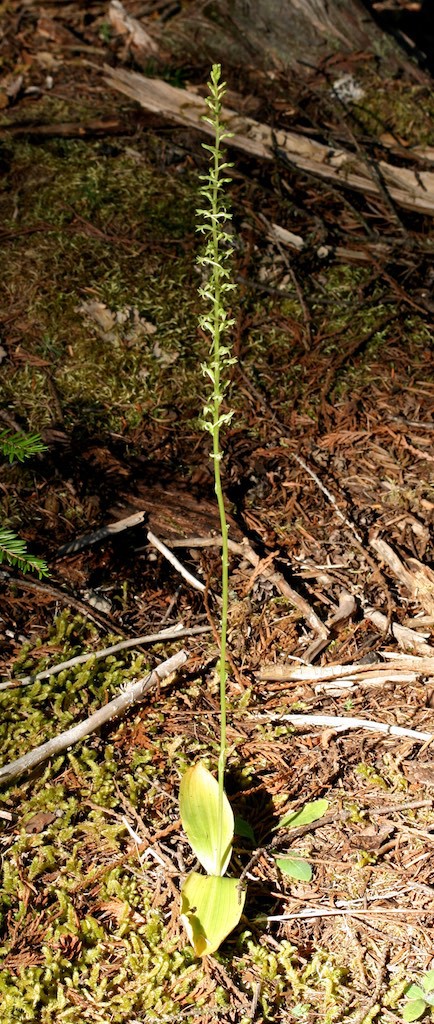
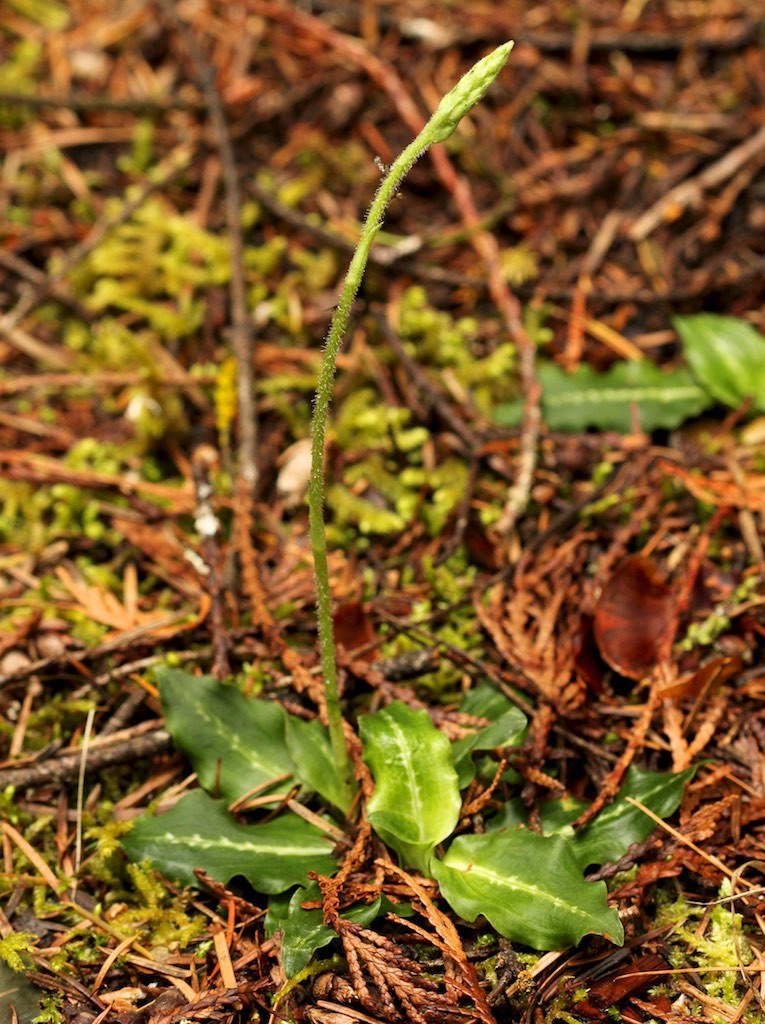
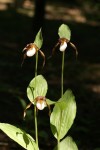
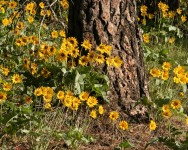
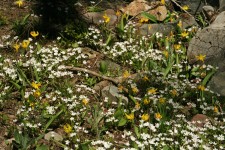

I brought 2 Cymbidium orchid plants from Southern California when We moved here. Will they thrive here and if so what special care do I need to take?
They grew and bloomed very well in south west Riverside county.
Hi William,
I haven’t tried growing orchids so I’m not sure what care they need besides being inside during the winter. The County Extension Office or a local Master Gardener might be able to help you.
Laura